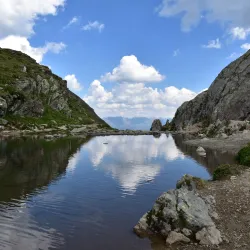Traffic Summary for Serfaus
Serfaus, a picturesque village in Austria, is known for its unique approach to transportation. Despite its small size, Serfaus offers an efficient and environmentally friendly transport system.
Average Commute Times
Seasonal Trends
During the winter ski season, Serfaus experiences an influx of tourists, impacting local transport. Summer months see increased pedestrian traffic as visitors explore the scenic landscapes.
Commuter Pain Points
Limited data on public transport options may pose challenges for new visitors. Peak tourist seasons can lead to crowded public spaces and longer wait times.
Best Travel Times
Early mornings and late evenings are ideal for avoiding tourist crowds. Weekdays tend to be less busy compared to weekends during peak seasons.
Event Impacts
Public events and festivals can lead to temporary road closures and increased pedestrian traffic. Special events often result in additional public transport services to accommodate visitors.
Sustainability Efforts
Serfaus is renowned for its car-free village center, promoting walking and public transport. The village utilizes an underground air cushion railway to reduce surface traffic and emissions.
Ride-Sharing Impact
Ride-sharing services are limited, encouraging the use of local public transport options. The focus remains on sustainable and communal transport solutions over individual car use.
Traffic Rankings
The Traffic Index for Austria combines user-contributed data on commute times, traffic dissatisfaction, CO2 emissions, and traffic system inefficiencies in Austria, to provide insights into overall traffic conditions.
"Key Takeaways"
Serfaus is committed to maintaining an eco-friendly transportation system.
The village's unique transport solutions contribute to its low traffic inefficiency.
Key Indexes
EmissionsCO2 emissions data is currently unavailable for Serfaus.
Efforts to maintain low emissions are a priority in this eco-friendly village.
TimeTraffic time index data is not available.
Serfaus is known for minimal traffic delays due to its efficient transport system.
InefficiencyTraffic inefficiency index data is not provided.
The village's transport system is designed to minimize inefficiencies.











